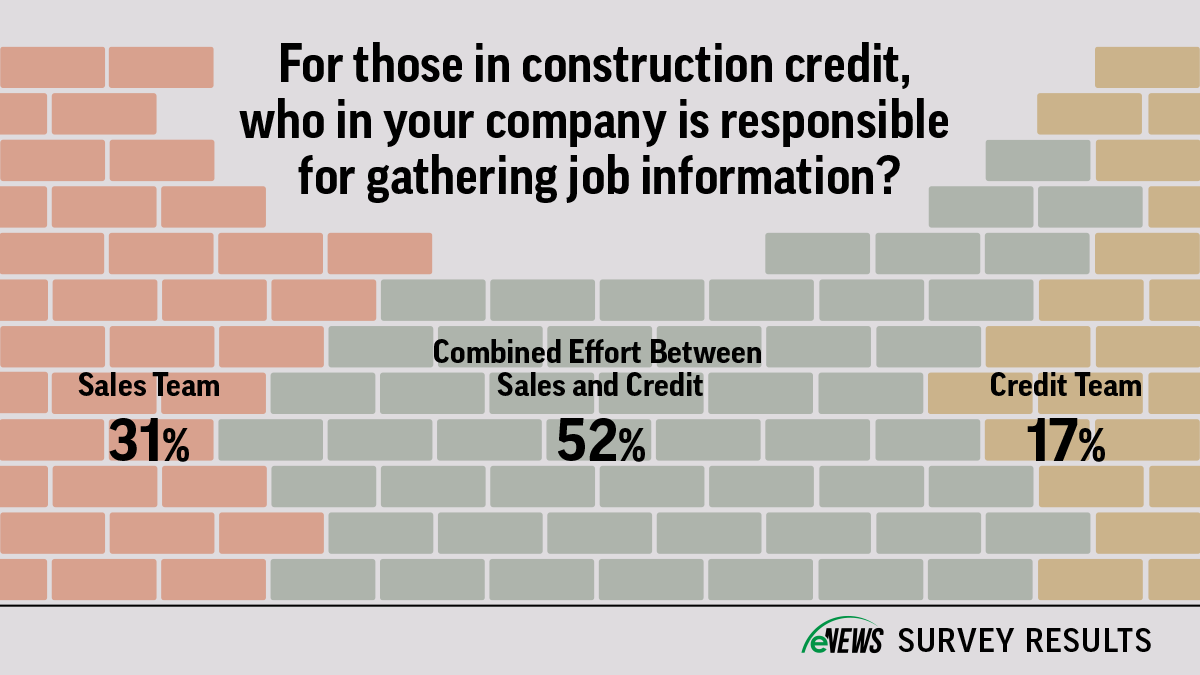Business Practices, eNews
How Often Should You Review Customer Credit Limits?

Credit management is a risky business. Every credit decision is directly influenced by ever-changing micro- and macro-economic factors. To better mitigate risk, credit professionals must be proactive in their credit limit assessments for new and existing customers. According to a recent eNews poll, most credit professionals review existing customer credit limits on an annual basis (64%), while some reassess credit limits as frequently as every six months (23%). Others reassess credit limits less often, such as 18 months (4%) or 24 months (10%) at a time. The frequency of reviewing credit limits can be due to one or a combination of factors.
Changes in Customer Payment Behavior
Changes in customer activity determine how often you reassess credit limits as it can impact their ability to pay you in the long term. If a customer starts to slow down their payments or asks for a credit limit increase, then you might want to increase the frequency of credit limit reassessments. Tim Cain, CBA, director of global credit and collections at Keen, Inc. (Portland, OR) conducts semi-annual credit reviews, but as new information comes in, he’ll do some on-the-spot credit reviews or demand reviews that could lead to either a credit line increase or decrease. “For partners who want to take on additional orders because business is booming, we want to make sure that they can handle it,” he said.
But if a customer pays you on time and rarely asks for an increase in credit limit, you’ll reassess credit limits less often. Jeff Cozad, CCP, CPC, business manager at Patz Corporation (Pound, WI) reviews credit limits of existing customers every 24 months unless there is something that triggers him to view the account. “If I have an account where they’re going over their credit limit, having payment issues or delinquencies and when there’s been a change in the business or ownership, that will prompt a review sooner,” he said.
Your Risk Tolerance
Understanding your company’s risk capacity and risk tolerance is also key when determining how often to revisit credit lines. “We rely heavily on our credit reporting tools with the risk tolerance,” said Nate Hutton, CICP, global credit manager at Donaldson Company, Inc. (Minneapolis, MN). “Fortunately, our portfolio of customers tends to be less risky so we typically can accommodate all customer credit limit requests accordingly.”
Risk tolerance is subjective, while risk capacity is objective. Risk tolerance refers to an organization’s willingness to accept a certain level of risk based on their comfort level. For example, a well-established company with high margins in a market with growth may have a high-risk tolerance and be willing to sell to high-risk customers. A company with low margins in a highly competitive market may have a lower tolerance for risk and will sell only to financially strong customers.
Risk capacity represents the maximum amount of risk that can be tolerated without causing significant negative consequences. An undercapitalized company may not have sufficient reserves to survive a large loss. Therefore, it has low-risk capacity.
“We are anticipating more risk based on what we’ve seen in the last few years,” said Barry Hickman, senior director of credit at Dal-Tile Corporation (Dallas, TX), who reviews customer’s credit limits every six months. “We’re tightening up practices and credit lines to better secure our debt and properties since we’re in the construction supply chain industry,” he said. “At the end of a project, there’s not a lot of money left either with the owner or with the general contractor, so you have to be very quick in filing more lien notices and bond claims. We have some tools that allow us to create project accounts for large commercial projects to keep an eye on a customer’s account and abide by their rights in various states.”
Customer Risk Rating
Risk rating involves the categorization of individual loans, based on credit analysis and local market conditions, into a series of graduated categories of increasing risk. By figuring out your customer’s risk rating, you can decide how often you reassess or readjust their credit line. Scott Dunlap, director of credit and collections at Coleman Oil Co. (Lewiston, ID) assesses credit limits on an annual basis but ultimately relies on the risk rating of the customer to determine the frequency of credit line reassessments. “I compute a weighted score, where a lower score corresponds to a higher risk level, and conversely, a higher score indicates a lower risk level. A high-risk account may get reviewed every six months whereas a low-risk account may be reviewed 18 months or more.”
The amount of credit granted to a customer determines how often you reassess credit limits as well. “We do an annual review of every customer as long as we’ve already provided them a minimal amount of credit and if they’re below that threshold, we do a periodic check of smaller sources and just live with that risk at that time,” said Marc Greenberg, CCRA, credit supervisor at Mansfield Service Partners South, LLC (Gainesville, GA). “We try to maximize the amount of credit whenever possible as it provides a better customer experience and increases the customer’s ability to pay us.”
Sales Revenue of Customer
Sales directly impact the timing of credit limit reassessment. When a customer generates lower sales, they tend to pay more slowly, prompting credit managers to monitor their account more frequently. Sherry Bushman, director of credit and collections at Partners Personnel (Santa Barbara, CA) reviews credit limits for new clients based on weekly sales volumes. “We review every six months to ensure that we take in consideration customers who are seasonal and have multiple billing methods and to capture the average sales to accommodate the credit limit,” she said. “However, we review the following criteria: 1) If the client is exceeding the credit limit, 2) What is the average payment history and 3) Are they below D&B maximum credit limit?”
State of the Economy
Inflationary pressures as well as increases in input costs and manufacturing costs create cash flow issues for customers. This, in turn, causes more accounts to increase their credit limit above what they have previously established. “Over the last few years, we have needed to monitor changes in activity on the account more frequently, such as their credit usage,” Cozad said. “For example, customers used to pay you in 20 days and now they’re paying you in 30 or 35 days. If I notice those changes, then I’m going to do a credit review and see if I can get more information about what’s going on and if there’s potential risk of non-payment for us.”





